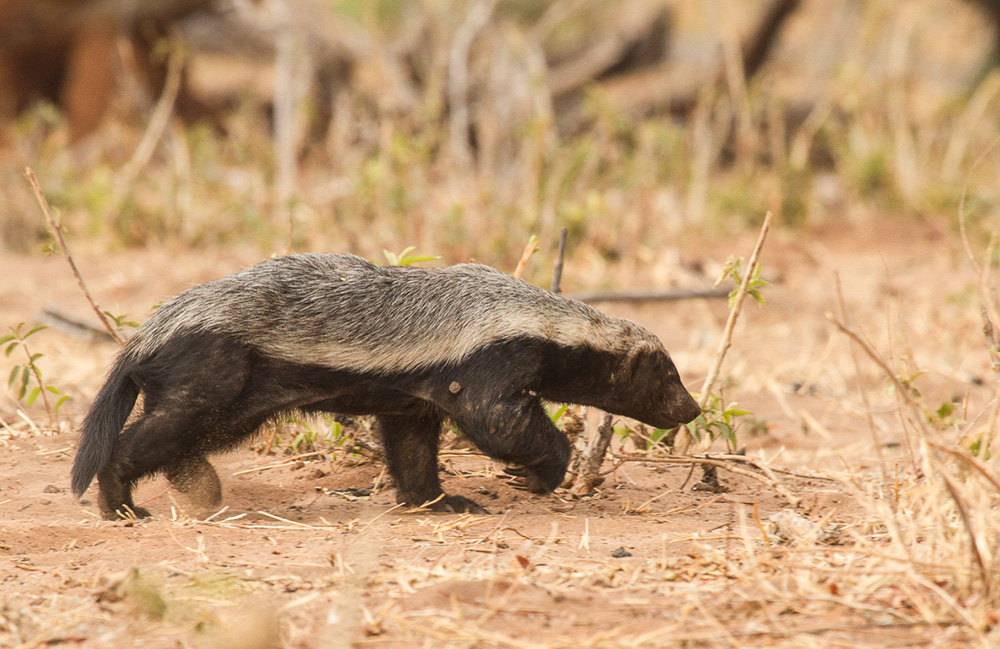Introduction to the Facts About the Honey Badger
When discussing Africa’s most formidable wildlife, lions, elephants, and crocodiles often steal the spotlight. However, there’s one small carnivore that consistently defies expectation — the Honey Badger (Mellivora capensis).
Known for its legendary fearlessness, unmatched resilience, and uncanny problem-solving ability, the honey badger has carved out a fierce reputation that vastly outweighs its size.
Often described as one of the world’s most aggressive animals, the honey badger has gained fame not only among naturalists and safari-goers but also through viral internet fame. However, beneath its meme-worthy audacity lies a remarkable animal with complex adaptations and a crucial role in the African ecosystem.
Let’s dive into five truly fascinating facts about this tough little survivor that roams the savannas, deserts, and forests of Africa with unmatched boldness.
1. Unstoppable Courage: Fear Is Not in Their Vocabulary
The honey badger is widely recognized for one trait above all: unrelenting fearlessness. This animal will square up to predators many times its size — including lions, leopards, and hyenas — often emerging victorious or unscathed.
Why so brave? Honey badgers have:
- A thick, loose-fitting skin that makes it extremely hard for predators to grip or fatally injure them.
- Sharp teeth and powerful jaws capable of crushing bones and shells.
- Ferocious defensive tactics including biting backwards and releasing foul-smelling anal secretions when under attack.
This evolutionary arsenal makes them almost impossible to subdue, earning them the title of “Africa’s toughest mammal.”
2. Masters of Intelligence and Problem-Solving
Honey badgers are not just brute fighters — they’re also exceptionally intelligent. In fact, researchers have documented their use of tools, memory, and strategic thinking.
In captivity, honey badgers have been observed:
- Using sticks, rocks, and mud to climb walls or open latches.
- Escaping multiple types of enclosures with an almost comical determination and cunning.
- Learning quickly from experience and adjusting tactics when faced with new obstacles.
This blend of intelligence and strength has led to increasing studies of their cognitive abilities, with many scientists comparing their behavior to that of primates and birds like crows.
3. A Diet as Diverse as Their Habitats
The honey badger is an opportunistic omnivore, which means it will eat almost anything it can overpower or find. From venomous snakes to bird eggs and fruit, nothing is off the menu.
One of their favorite meals — and the source of their name — is honey. Honey badgers have been seen raiding beehives, enduring countless bee stings to dig into the waxy treasure within. Their thick skin and resistance to venom allow them to shrug off bee attacks with remarkable indifference.
Their bold palate includes:
- Venomous snakes, including cobras and puff adders, whose bites would kill most animals.
- Rodents, lizards, birds, and insects.
- Plant material such as berries and roots when meat is scarce.
Their highly efficient digestive system and tolerance to toxins enable them to thrive in harsh environments where food is scarce or dangerous to acquire.
4. Formidable Physical Defenses (Facts About the Honey Badger)
Honey badgers are built like tanks. Their thick, rubbery skin is not only hard to penetrate but also incredibly loose, allowing them to twist and turn within a predator’s jaws to deliver painful bites.
Key physical features that make them nature’s equivalent of a warrior include:
- Strong claws for digging burrows and tearing into prey or beehives.
- Short, muscular legs that provide explosive bursts of speed.
- A low-slung body profile that enables stealthy ground movement.
Combine all this with a well-developed resistance to snake venom, and you have an animal that seems biologically engineered for survival against all odds.
5. Vital Role in African Ecosystems
Though they may appear solitary and aggressive, honey badgers play a critical ecological role in the regions they inhabit. As mesopredators, they help control populations of rodents, insects, and reptiles.
Their foraging behavior also assists in seed dispersal and soil aeration — especially when they dig for prey or shelter. This digging contributes to the health of grassland ecosystems, aiding in the regeneration of plant life.
Moreover, they occasionally act as keystone species, indirectly benefiting larger animals. For example, abandoned honey badger burrows often provide shelter for jackals, hares, and reptiles.
The Threats They Face
Despite their resilience, honey badgers face threats from human conflict. Farmers sometimes kill them in retaliation for poultry raids. In some regions, they are hunted for traditional medicine or persecuted out of fear.
Fortunately, they are currently classified as a species of Least Concern by the IUCN. However, conservationists urge continued protection through public education, conflict mitigation, and habitat preservation.
Facts About the Honey Badger #Facts About the Honey Badger Facts About the Honey Badger





 WildHorn Africa – Authentic and unforgettable tours across Africa, guided by local experts who know the land, wildlife, and culture best.
WildHorn Africa – Authentic and unforgettable tours across Africa, guided by local experts who know the land, wildlife, and culture best.


